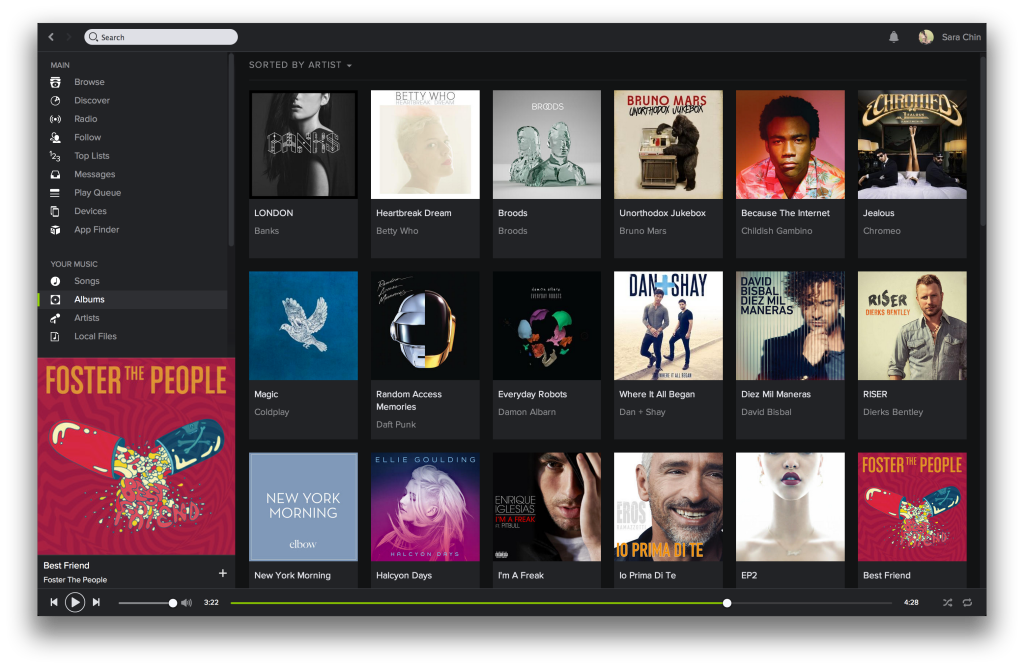Although our love for it has never faltered, the way we listen to music has drastically changed in the last 75 years. The addition of streaming services like Spotify has enabled us to listen to an unlimited amount of digital music. So how does having endless listening options affect the way we interact with our music?
 Paul Lamere, the director of developer platform for The Echo Nest, will be speaking at SXSW Interactive on this very subject, with his panel, “How We Listen to Music.” Using data collected at The Echo Nest and Spotify, Lamere will explore how easy access to so much music is changing how a listener organizes, discovers and experiences their music.
Paul Lamere, the director of developer platform for The Echo Nest, will be speaking at SXSW Interactive on this very subject, with his panel, “How We Listen to Music.” Using data collected at The Echo Nest and Spotify, Lamere will explore how easy access to so much music is changing how a listener organizes, discovers and experiences their music.
The data behind our listening habits is what gave Lamere the idea for the session in the first place.
“Now is really the first time in history we’ve had such a clear view of how people listen to music,” Lamere said. “I thought it’d be pretty interesting to dive in and see what kind of trends we could find and talk about.”
When Lamere was younger, the only option for listening to music was to physically go to the store and buy a vinyl record. Sometimes, you wouldn’t know what the songs on the album sounded like and would end up spending $10-20 on music you didn’t like. Lamere said this rarely happens anymore, thanks to online streaming.
“With a music subscription service like Spotify, the cost of exploring and trying new music is a lot lower, so you’re much more apt to listen to new things,” Lamere said. “If you don’t like it, you can hit the ‘skip’ button and move on to something else.”

Lamere feels there is no comparison to digital music, and mentioned that he even got rid of all his CDs and vinyl. Now, he listens to nothing but streaming services.
“Walking around with 30 million songs is pretty incredible,” Lamere said. “I can’t think of any other way to listen to music.”
Lamere also believes music is becoming a bigger part of our everyday life. People listen to music when they’re relaxing, hanging out with friends or even sleeping, and Lamere plans to address the importance of that during his presentation.
“We’re shifting away from a genre-focused world where we listen to rock, indie and pop to a much more context-driven world,” Lamere said. “We’re much more likely now to seek out music that we want to use for a workout or for studying.”
Although streaming services are popular and people are constantly listening to music, Lamere said the industry still faces competition. It’s just not from TV, radio and movies like it was 20-40 years ago.
“Now music has to compete with Angry Birds and Candy Crush, Twitter and Facebook, Netflix and Hulu, and a billion other things,” Lamere said. “Music certainly has to work really hard to get attention, but music has some really special qualities. You can listen to music while you’re doing other things, and you can’t do that with other forms of entertainment.”
It is Lamere’s hope that the general takeaway for the audience will be that data is interesting, especially surrounding music. The data says a lot about the listener that those in the music industry didn’t know before, and Lamere said they’re just starting to tap into the kind of things we can find out.
Lamere will create a Web page with some of the links he’ll refer to during his talk, so be sure to check it out during SXSW Interactive. (Lamere said the page wouldn’t be active for a few more days.) He also writes a blog about the interface of music and technology.
Session Details
Tuesday, March 17
12:30-1:30 p.m.
Hyatt Regency Austin
Texas Ballroom 4-7
208 Barton Springs Rd
For more information on this panel about the way we listen to music, visit http://schedule.sxsw.com/2015/events/event_IAP37213.
